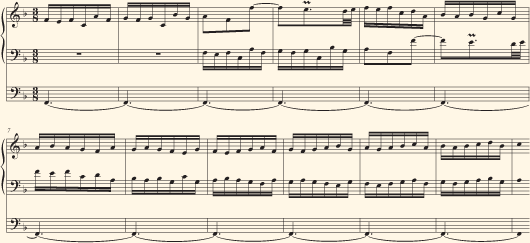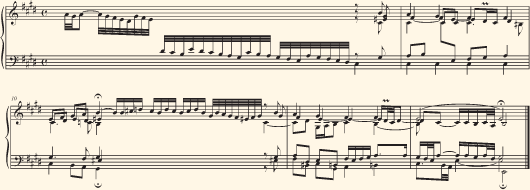Bereichsnavigation
5. Some examples of organ music
Some examples of organ music
The following examples of organ music by Bach were recorded by for use in a half-hour lecture-demonstration in 1994. (See A quest for Bach's ideal style of organ temperament, in: Stimmungen im 17. und 18. Jahrhundert..., Michaelsteiner Konferenzberichte 52, 1997. The essay can be downloaded from here) The organist was Peter Sykes. The unequal temperament was as follows:

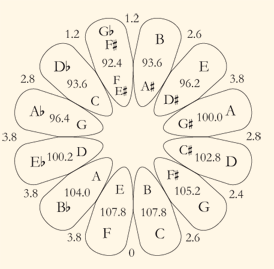
Please listen with high-quality speakers or earphones. For each item I will give first some identifying information and then some comments on how the unequal temperament affects it.
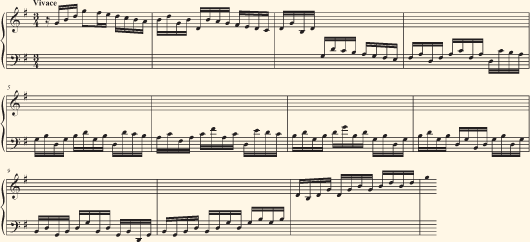
Tracks 2–3: BWV 582, the Passacaglia in C-minor, the second statement of the thematic bass-line (after its initial, monophonic statement) and the conclusion. While the G-major triad is here just as clear as in the previous piece, the C-minor triad is notably darker than in equal temperament, and the F-minor triad even more so. These qualities are well suited to the character of the piece. Also, the harshness of the D♭-major triad in the second excerpt is expressively well suited to the particular musical context where it occurs, and the remarkably mild tempering of the concluding C-E strengthens the sense of luminous clarity in this triad with "Picardy 3rd".

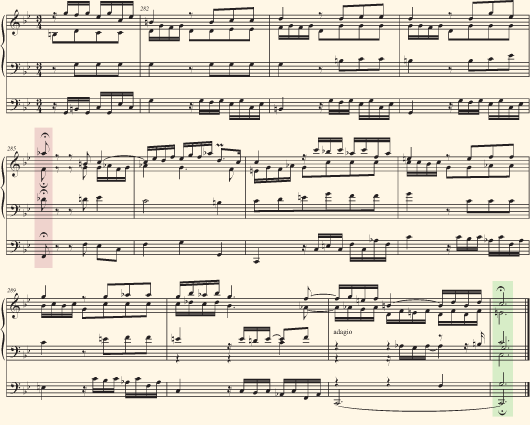
Tracks 4–6: BWV 552, the Prelude in E♭-major, the opening and two other excerpts. The opening shows that the nuances of the tuning are/were subtle enough (notwithstanding the peculiarly dark effect of C-minor in the Passacaglia) to enable Bach to compose virile, allegro organ music in E♭-major. Notice, however, the tender effect of the lowish A♭ in the B♭7 chord in the first excerpt. The other two excerpts show that Bach was cautious in his use of D♭-major triads and, though to a rather lesser extent, of A♭-major triads as well. The staccato marks are due to the composer. This is his longest keyboard piece in E♭-major. It was written soon after he played on the organ at Altenburg subsequent to its retuning to some kind of Neidhardt-style temperament. Years later, an article in a German newspaper commented on how Bach in Altenburg had made the congregation sing successive verses of the "Glauben" (the Credo in German) in D-, E♭- and E-minor: "Das konnte aber auch nur ein Bach und eine Orgel in Altenburg! Das sind und haben wir nicht alle."



Tracks 8–10: BWV 622, "O Mensch bewein", E♭-major, the beginning, then nearly three bars from the middle, and then the conclusion. The intimate beauty of the piece is enhanced by the suitably unequal temperament. Notice the expressively low intonation of D♭, A♭, B♮ and A♮, and then the conversely high intonation of the C in the tune in Bar 7.




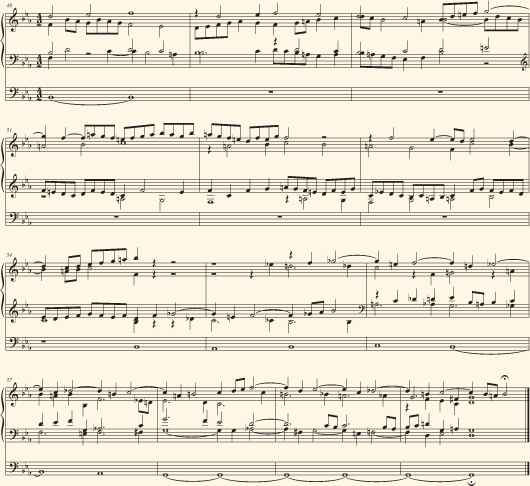
Track 13: BWV 714, "Ach Gott und Herr", B-minor, the first half. Here are the most straightforward uses of C♯-major (or D♭-major) triads that I have found in Bach's organ music. A mitigating factor is the voice-leading with its curious diminished 5th or diminished 4th just before each such chord.


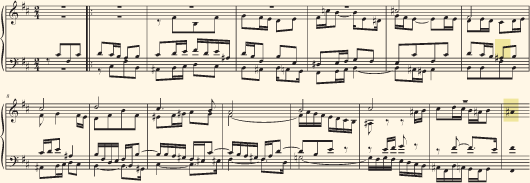
Track 16: BWV 721, "Erbarm dich" (complete), likewise F♯-Phrygian: Here again C♯-E♯ is treated very cautiously. Indeed, notice at bars 40-41 the awkward voice-leading as the alto leaps from E to G♯ while the bass slips up from E to E♯ and none of the voice-parts descends. It seems to me very likely that this was done to avoid a root-position C♯-major triad at bar 41, i.e. with the alto going E-E♯-F♯ and the bass E-C♯-F♯ (which would be a more "correct" procedure according to the usual norms of harmony). In fact there is no root-position V-chord in the entire piece.



